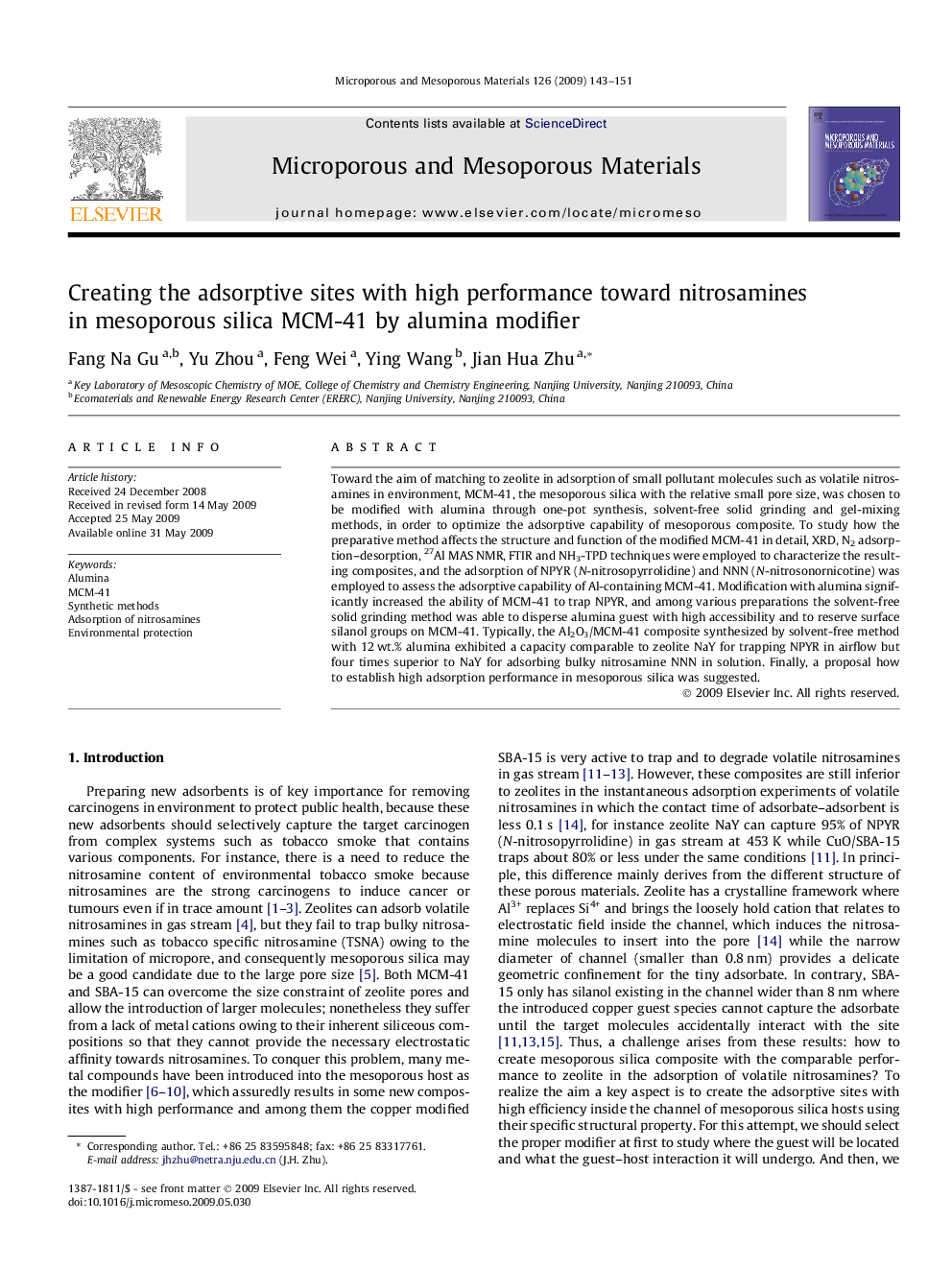| Article ID | Journal | Published Year | Pages | File Type |
|---|---|---|---|---|
| 74521 | Microporous and Mesoporous Materials | 2009 | 9 Pages |
Toward the aim of matching to zeolite in adsorption of small pollutant molecules such as volatile nitrosamines in environment, MCM-41, the mesoporous silica with the relative small pore size, was chosen to be modified with alumina through one-pot synthesis, solvent-free solid grinding and gel-mixing methods, in order to optimize the adsorptive capability of mesoporous composite. To study how the preparative method affects the structure and function of the modified MCM-41 in detail, XRD, N2 adsorption–desorption, 27Al MAS NMR, FTIR and NH3-TPD techniques were employed to characterize the resulting composites, and the adsorption of NPYR (N-nitrosopyrrolidine) and NNN (N-nitrosonornicotine) was employed to assess the adsorptive capability of Al-containing MCM-41. Modification with alumina significantly increased the ability of MCM-41 to trap NPYR, and among various preparations the solvent-free solid grinding method was able to disperse alumina guest with high accessibility and to reserve surface silanol groups on MCM-41. Typically, the Al2O3/MCM-41 composite synthesized by solvent-free method with 12 wt.% alumina exhibited a capacity comparable to zeolite NaY for trapping NPYR in airflow but four times superior to NaY for adsorbing bulky nitrosamine NNN in solution. Finally, a proposal how to establish high adsorption performance in mesoporous silica was suggested.
